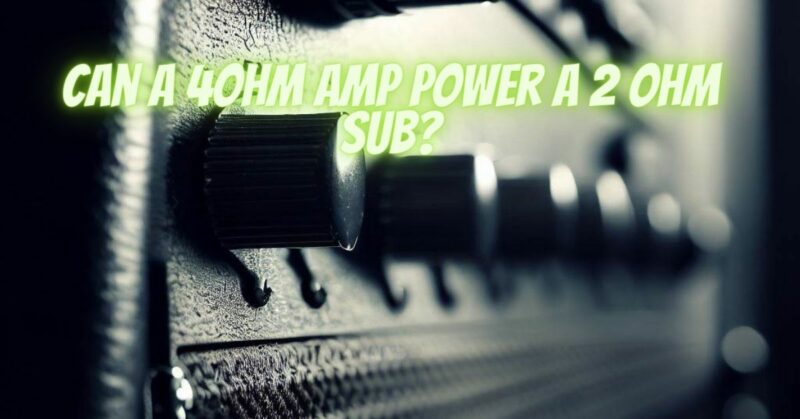The world of audio systems is a realm of intricate connections and interdependencies, where the harmony between components determines the quality of sound produced. The question often arises: Can a 4 ohm amplifier power a 2 ohm subwoofer? This scenario involves a potential impedance mismatch and carries significant implications for performance, sound quality, and equipment safety. In this article, we’ll explore the considerations, advantages, and potential challenges of using a 4 ohm amplifier with a 2 ohm subwoofer, providing insights to help you make informed decisions that optimize audio performance while preserving the health of your equipment.
Understanding Impedance and Power Compatibility
Impedance, measured in ohms (Ω), signifies the electrical resistance that a speaker or subwoofer presents to the amplifier’s output signal. The compatibility of impedance values between amplifiers and speakers/subwoofers is crucial for effective power transfer and preventing potential damage.
Using a 4 Ohm Amplifier with a 2 Ohm Subwoofer: Considerations
Impedance Mismatch:
Using a 4 ohm amplifier to power a 2 ohm subwoofer involves introducing a lower impedance load to the amplifier. This scenario can have both advantages and potential challenges.
Advantages:
- Potential Power Boost: 2 ohm subwoofers can potentially draw more power from the amplifier compared to higher impedance speakers. This can result in increased volume levels and potentially greater impact.
- Increased Bass Response: Lower impedance subwoofers might offer improved control over cone movement, particularly in the lower frequency range. This can lead to tighter and more pronounced bass response.
Considerations:
- Amplifier Stress and Overheating: A 4 ohm amplifier is not designed to handle a 2 ohm load, and driving it with a lower impedance subwoofer can cause the amplifier to work harder. This can lead to overheating, distortion, and even amplifier failure.
- Potential Damage: Using a 4 ohm amplifier with a 2 ohm subwoofer can strain the amplifier’s components beyond their intended limits, potentially causing permanent damage.
- Warranty and Protection: Using mismatched impedance loads can void warranties and result in equipment malfunction, especially if not within the manufacturer’s specifications.
Procedure and Precautions:
If you’re contemplating using a 4 ohm amplifier with a 2 ohm subwoofer, follow these steps:
- Review Specifications: Check the specifications of both the subwoofer and the amplifier to understand their impedance compatibility and recommended load ranges.
- Monitor Performance: After installation, closely evaluate the sound quality, volume levels, and any signs of distortion, overheating, or unusual behavior. Be prepared to make adjustments if necessary.
Using a 4 ohm amplifier to power a 2 ohm subwoofer involves treading a fine line between potential advantages and compatibility challenges. While the lower impedance of the subwoofer might offer increased power and enhanced bass response, it’s vital to ensure that your amplifier can handle the new impedance load without straining or overheating. Prior to making any changes, thoroughly research the specifications of both your subwoofer and amplifier, consult with experts, and prioritize the integrity of your audio system. By taking these steps, you can confidently explore the possibility of optimizing your audio experience while ensuring the quality and longevity of your equipment.


